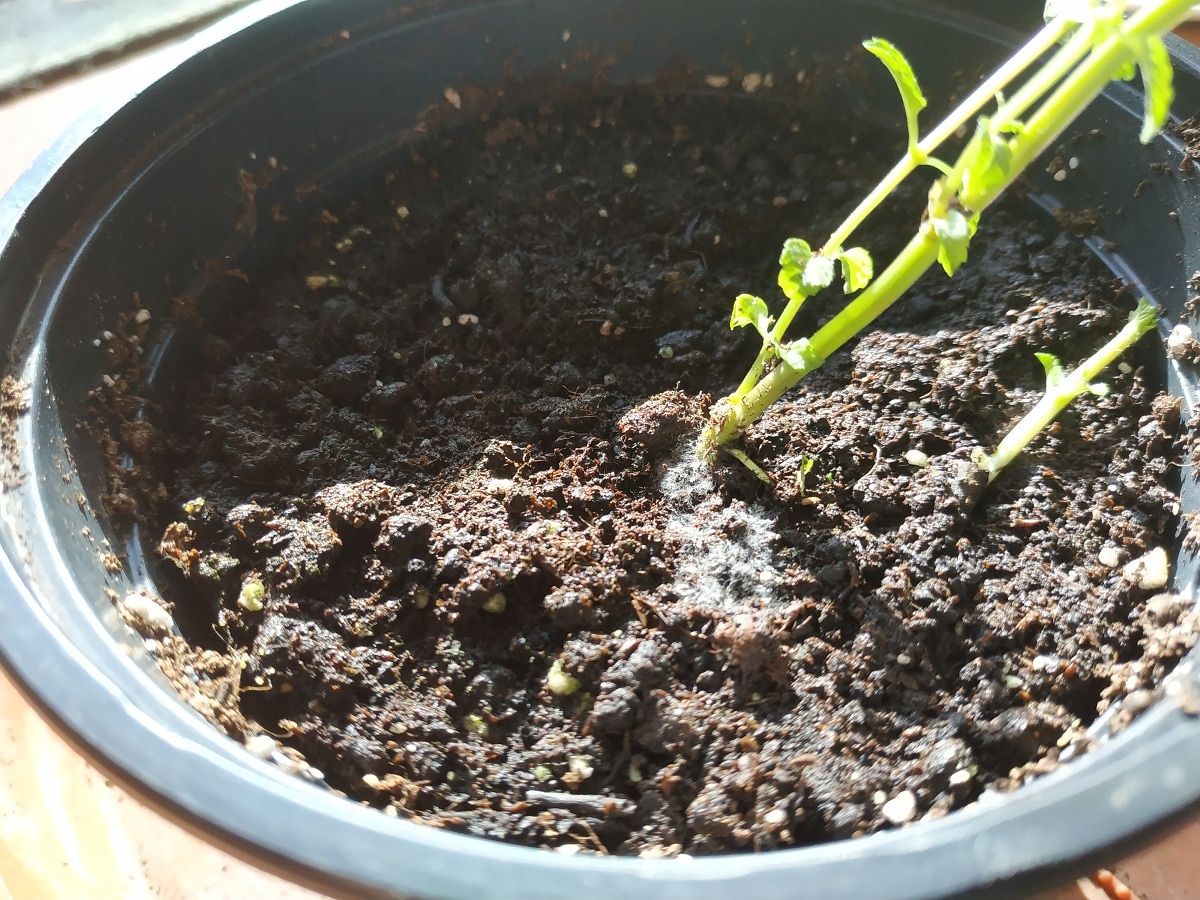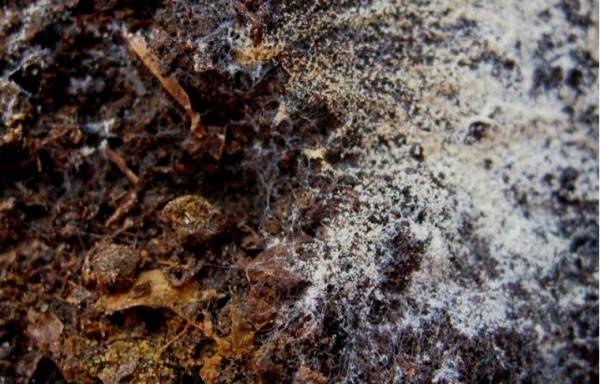
Many times we can see in the substrate of the plants what it looks like a whitish layer. This layer is made up of mold and it tends to appear more frequently when it comes to indoor plants arranged in pots. The substrate is usually a store-bought mix and they are generally more prone to these fungi. Although its appearance makes you wonder, don’t panic. It doesn’t always mean it’s something harmful to the plant. The appearance of white mold on the plant soil it can colonize the entire substrate and be a danger or not.
Therefore, we will dedicate this article to tell you everything you need to know about white mold in plant soil and what it looks like.
Contents
Why does white mold grow in plant soil

The first thing to know is that you don’t always see a white layer of mold on the soil of potted plants. It is very common that, especially when irrigated with tap water, a small amount of salt and lime accumulates in the soil over time. This is because plants absorb nutrients and water from the soil, leaving behind these unwanted substances. At first it looks like white velvet, but as it builds up, it will eventually turn into a brittle coat. This coating is easily removed by hand or by removing the first inch of the substrate, then reapply some.
However, if the white coating is wet, it is a white mold in the plants’ soil. It is also easy to identify by the way it spreads. You need to see if it quickly colonizes the entire substrate, even the plants. It is on these occasions that there is no doubt that it is a fungus.
This situation is very common in mixtures of substrates and nutrients, because they create an environment that is also conducive to their development. When moisture and temperature conditions are high, this will occur in the soil and, along with the nutrients in the substrate, will promote the growth of molds.
In the case of saprophytes, they only feed on dead plant material, so they pose no danger to plants or people. In all cases, its abnormal accumulation will form a thick layer on the substrate, making it difficult for plants to absorb water while retaining water. In these cases, it must also be removed.
How to remove white mold from plant soil

If you don’t know what type of mold is on the substrate and it gets too big or has an unpleasant odor, it is best to remove it just in case. Some mold in the substrate can be harmful and attack our plants.
If the pot itself has mold, it should be thoroughly cleaned. First remove the root ball from the pot, then carefully shake as much soil as possible from the root. If these are affected by mold, you can also cut them. After that, use a new substrate and a new container, or sterilize the pot.
If it is not so widespread in the pot, you can use an antifungal agent. Organic fungicides are always more recommended. For example, you can use milk dissolved in water and sprinkle it on the substrate. In this way, you can spray the affected parts of the plant every day until the fungus disappears.
It is also important to move the pot to a well-ventilated area that is as dry as possible, and reduce watering of the plants while treating the fungus. If there is not enough water, it will be much easier to remove the mold.
Prevention
In most cases, it is best to prevent fungus from developing before trying to eliminate it. Preventing the development of mold in the soil of plants is as simple as providing conditions that are not compatible with fungi: ventilation and low humidity. Obviously, this does not mean stopping watering the plants, but waiting for the substrate to dry out a bit before watering will help a lot. In addition, it is important that if the plant is in a pot, it has drainage holes to avoid water accumulation.
As for aeration, just make sure that the plants are in a position where the air circulates naturally. However, some species are damaged by currents, so this is not recommended. In these cases, all you have to do is gently remove the top layer of substrate, and we will not damage the roots. By stirring the substrate well, it will also naturally expel air, which will hinder the growth of fungi.
It is also important to provide the plants with the necessary fertilizer, neither excessive nor lack of fertilizer, and to always remove the residues of leaves and fallen flowers from the soil or substrate. A good option is to use a tray to water under the plants instead of spraying water from above. This can only be left for a few minutes, then removed or put in an adequate amount of water each time to avoid puddling at the roots. Puddling can lead not only to other fungi, but also to root rot.
Care mistakes
There are some mistakes in caring for our plants and none of us want to have them, let’s see what are the main aspects of fungi that can grow in the soil of plants :
Small ventilation environment: this is a typical situation in the coldest month of the year. Due to the low temperature, we tend to reduce the ventilation time at home.
Warm temperature: It is the decisive factor to avoid the growth of fungi in the plant soil.
High humidity: This is the main reason for the appearance of fungi in the plant soil.
Decomposing substances in the substrate: Although they can be beneficial for our plants in small quantities, if we add the above, all factors can eventually create an ideal soil for fungi.
I hope that with this information you can learn more about white mold in plant soil and how to eliminate it.









